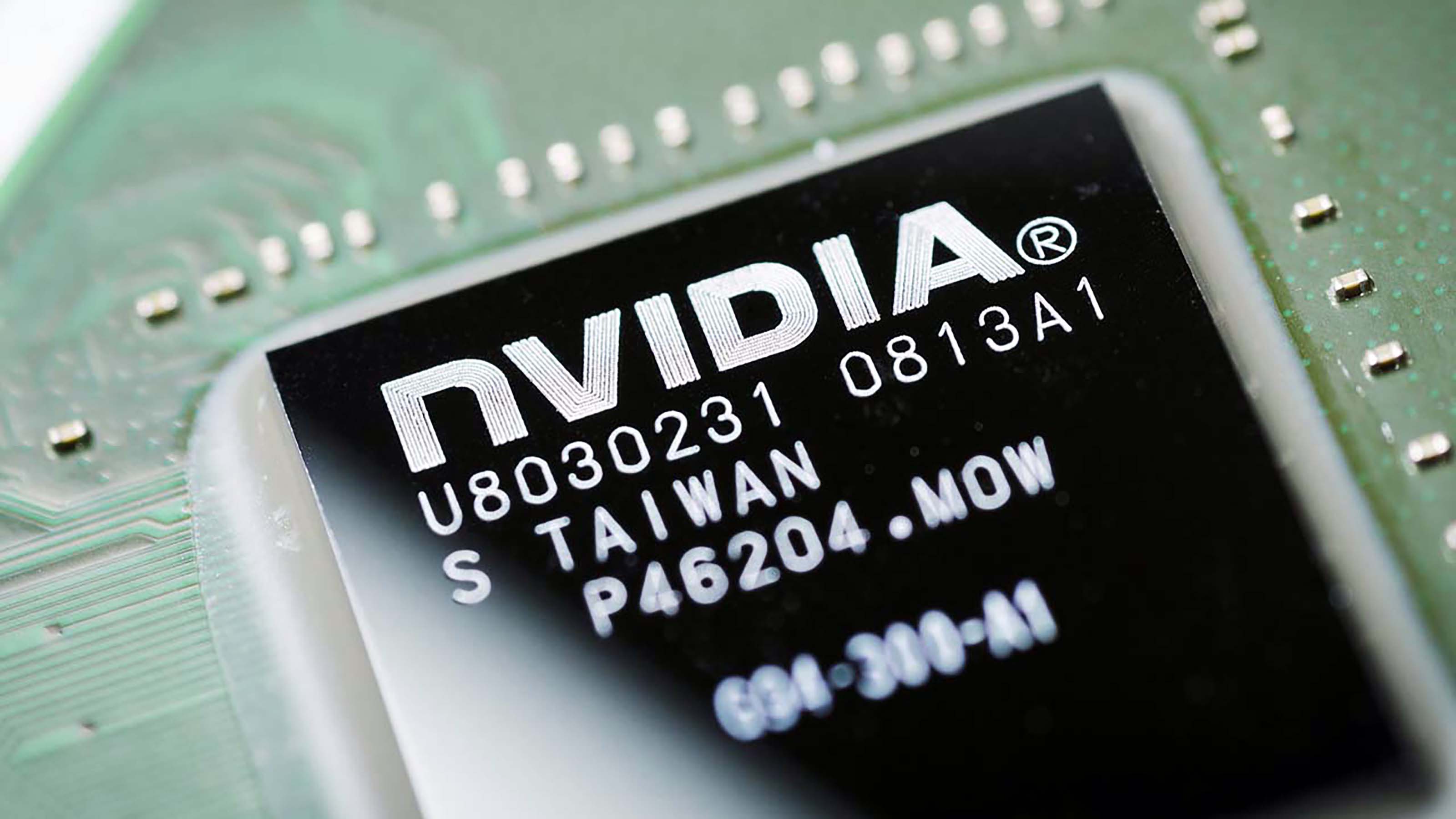Is Nvidia Stock on Sale?
NVDA stock is a screaming bargain by some relative valuation metrics.


Analysts have been busy updating their discounted cash flow models and price targets for Nvidia (NVDA) after the most important AI company in the world failed to give the sort of blow-out revenue guidance Wall Street has come to expect.
Indeed, shares in NVDA, the world's second most valuable publicly traded company with a market cap in excess of $3 trillion, actually stumbled after posting Q3 results.
But then these sorts of things can happen when a stock is said to be priced for perfection.

Sign up for Kiplinger’s Free E-Newsletters
Profit and prosper with the best of expert advice on investing, taxes, retirement, personal finance and more - straight to your e-mail.
Profit and prosper with the best of expert advice - straight to your e-mail.
Either way, it seemed like a good time to take a look at a few of the ways in which analysts' expectations have changed for NVDA stock in light of the company's latest guidance.
First, let's have a look at NVDA's price target. Although these targets are of limited utility, they do form the basis for declaring whether a stock is a Buy, Hold or Sell.
As of now, NVDA's average price target stands at about $170, up roughly 6% from the pre-earnings release target of about $160, according to data from S&P Global Market Intelligence.
NVDA's new average price target gives shares implied upside of about 20% over the next 12 months. The old price target – based off NVDA's previous level – gave the stock implied upside of about 13%.
It's hard to believe Nvidia has become a $3 trillion company because of its potential for 13% or 20% price upside over the next year or so. Heck, the stock nearly tripled over the past 52 weeks.
Price targets. Go figure.
Perhaps relative valuation can be more helpful.
Nvidia is cheap, relatively speaking
First, a caveat about valuation. While absolutely critical, valuation tends to play out on its own time frame. This time frame can be much longer than investors expect. Keep this in mind when looking at Nvidia, as the stock usually looks expensive and yet it keeps going up.
That said, NVDA's relative valuation does look increasingly compelling by some measures these days.
For one thing, while it's true that Nvidia changes hands at nearly 35 times analysts' average next-12-months earnings per share (EPS) estimate, this multiple represents a 20% discount to its own five-year average, according to data from LSEG Stock Reports Plus.
Perhaps more importantly, after updating their models, analysts' average long-term growth forecast now stands at more than 62%, per LSEG.
These revisions make NVDA look attractively priced once you consider how fast the stock is rising relative to its growth prospects. Indeed, by at least one metric – the price/earnings-to-growth (PEG) ratio – Nvidia stock looks very cheap on a relative valuation basis.
Here's why: since NVDA stock is trading at 35 times expected earnings and has a LTG forecast of more than 62, its forward PEG is 0.6. To put that in perspective, the S&P 500 trades at a PEG of 2.1.
By this measure, NVDA trades at a 70% discount to the broader market. That's not bad, but then Nvidia and the broader market are sort of apples and oranges.
That's why we want to look at Nvidia's PEG relative to its peers and itself. This gives us an idea of what sort of premium the market has been willing to pay for Nvidia's growth prospects in the past.
And what do we find? Bulls will be happy to know that with a PEG ratio of 0.6, Nvidia stock trades at a 70% discount to the semiconductor industry average.
Even more intriguing, however, is that NVDA stock also trades at a steep discount to its own five-year average. Indeed, per LSEG Stock Reports Plus, if Nvidia's PEG "returned to historical form," the stock would trade at $349.04.
That's not a price target, mind you, it's just some modeling. But it does give NVDA stock implied price upside of about 150% from current levels.
As for Wall Street's collective wisdom on this top-rated Dow Jones stock, of the 63 analysts issuing opinions on NVDA surveyed by S&P Global Market Intelligence, 47 call it a Strong Buy, 12 have it a Buy and four say it's a Hold.
That works out to a consensus recommendation of Strong Buy, making Nvidia one of the Street's top S&P 500 stocks to buy too.
Related Content
- If You'd Put $1,000 Into Nvidia Stock 20 Years Ago, Here's What You'd Have Today
- Nvidia Stock Is Joining the Dow. Is It Time to Buy?
- Best Blue Chip Stocks: 21 Hedge Fund Top Picks
Get Kiplinger Today newsletter — free
Profit and prosper with the best of Kiplinger's advice on investing, taxes, retirement, personal finance and much more. Delivered daily. Enter your email in the box and click Sign Me Up.

Dan Burrows is Kiplinger's senior investing writer, having joined the publication full time in 2016.
A long-time financial journalist, Dan is a veteran of MarketWatch, CBS MoneyWatch, SmartMoney, InvestorPlace, DailyFinance and other tier 1 national publications. He has written for The Wall Street Journal, Bloomberg and Consumer Reports and his stories have appeared in the New York Daily News, the San Jose Mercury News and Investor's Business Daily, among many other outlets. As a senior writer at AOL's DailyFinance, Dan reported market news from the floor of the New York Stock Exchange.
Once upon a time – before his days as a financial reporter and assistant financial editor at legendary fashion trade paper Women's Wear Daily – Dan worked for Spy magazine, scribbled away at Time Inc. and contributed to Maxim magazine back when lad mags were a thing. He's also written for Esquire magazine's Dubious Achievements Awards.
In his current role at Kiplinger, Dan writes about markets and macroeconomics.
Dan holds a bachelor's degree from Oberlin College and a master's degree from Columbia University.
Disclosure: Dan does not trade individual stocks or securities. He is eternally long the U.S equity market, primarily through tax-advantaged accounts.
-
 Stock Market Today: Stocks Soar on China Trade Talk Hopes
Stock Market Today: Stocks Soar on China Trade Talk HopesTreasury Secretary Bessent said current U.S.-China trade relations are unsustainable and signaled hopes for negotiations.
By Karee Venema
-
 2026 Disney Dining Plan Returns: Free Dining for Kids & Resort Benefits
2026 Disney Dining Plan Returns: Free Dining for Kids & Resort BenefitsPlan your 2026 Walt Disney World vacation now. Learn about the returning Disney Dining Plan, how kids aged three to nine eat free, and the exclusive benefits of staying at a Disney Resort hotel.
By Carla Ayers
-
 Stock Market Today: Stocks Soar on China Trade Talk Hopes
Stock Market Today: Stocks Soar on China Trade Talk HopesTreasury Secretary Bessent said current U.S.-China trade relations are unsustainable and signaled hopes for negotiations.
By Karee Venema
-
 How Can Investors Profit From AI's Energy Use?
How Can Investors Profit From AI's Energy Use?Global energy demand is expected to grow by leaps and bounds over the next several years as AI usage accelerates. Here's how to get a piece of the pie.
By Jacob Schroeder
-
 Can Trump Fire Powell? A Supreme Court Case Could Decide
Can Trump Fire Powell? A Supreme Court Case Could DecidePresidential posts threaten to overwhelm decades of precedent and tradition, whatever the nine justices decide.
By David Dittman
-
 What Are AI Agents and What Can They Do for You?
What Are AI Agents and What Can They Do for You?AI agents promise to be the next big thing in artificial intelligence, but what exactly do they do?
By Tom Taulli
-
 Should You Buy an iPhone Now Before Tariffs Hit?
Should You Buy an iPhone Now Before Tariffs Hit?Looming tariffs can make an iPhone purchase seem urgent. Here's what to do if you need another phone but want to save money.
By Laura Gariepy
-
 SRI Redefined: Going Beyond Socially Responsible Investing
SRI Redefined: Going Beyond Socially Responsible InvestingNow that climate change has progressed to a changed climate, sustainable investing needs to evolve to address new demands of resilience and innovation.
By Peter Krull, CSRIC®
-
 Here's When a Lack of Credit Card Debt Can Cause You Problems
Here's When a Lack of Credit Card Debt Can Cause You ProblemsUsually, getting a new credit card can be difficult if you have too much card debt, but this bank customer ran into an issue because he had no debt at all.
By H. Dennis Beaver, Esq.
-
 33 Stocks That Could Rally 50% or More This Year
33 Stocks That Could Rally 50% or More This YearAnalysts say these S&P 500 stocks have at least 50% price upside over the next year or so.
By Dan Burrows